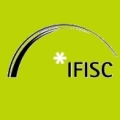


Language is a system of symbols registering categorisation of the world and human creation, but also a device used to alter reality (viz. e.g. the newspeak of propaganda employed by totalitarian systems on the one hand, and recommendations to use the “language of benefits” and “positive thinking” in theories of marketing and psychology on the other). At the same time language, its internal behaviour, as well as interactions with other patois exhibit properties of continually emergent complex adaptive systems, well known in physical, natural and social sciences. I shall demonstrate how language evolution, spread and competition can be modelled mathematically. The focus of attention in contemporary public discourse is strongly reflected in the uptake of novel linguistic creations on the Internet. The goals and initial results will be presented of an international research project analysing the character and speed of social diffusion of novel linguistic formations in densely interconnected areas this new medium allowing the user direct interaction with the content. In mainstream social sciences diffusion of innovation is taken to be a function of social structure. An appropriate perspective on the issue of neologism spread requires, therefore, an interdisciplinary approach, integrating competencies in sciences humanistic, social, and strict. Our project sets out to compute the degree with which the evolution of linguistic innovation coincides with diffusion phenomena observed in other fields of science. Such a complex systems perspective can lead to a deeper understanding of how mutual relations and communication between Internet users impact the evolution of language in time and space, and the shape and dynamics of the interactions themselves, delivering quantitative estimates on the expansion of not only linguistic expressions, but also news and more general manifestations of culture, additionally allowing the prediction of future trends and their scale.